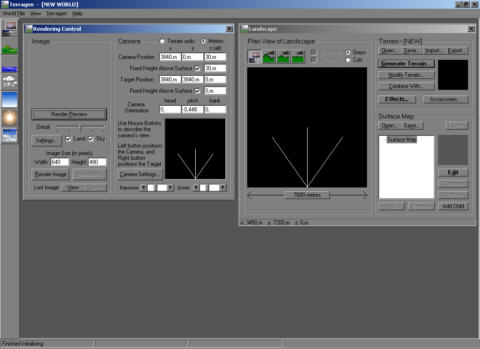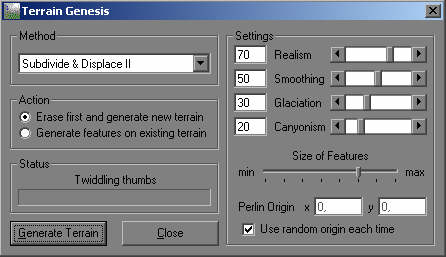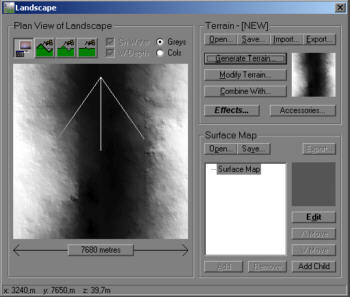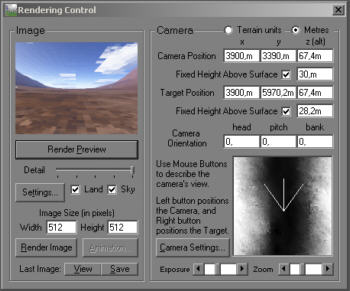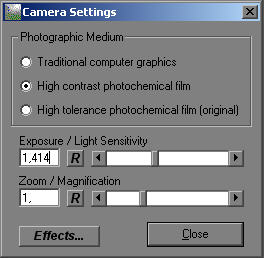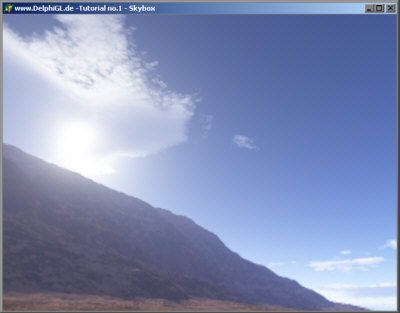procedure TForm1.GenerateSkyBox(pWidth, pHeight, pLength : TGLFloat);
var
px,py,pz : TGLFloat;
begin
List := glGenLists(1);
glNewList(List, GL_COMPILE);
px := - pWidth / 2;
py := - pHeight / 2;
pz := - pLength / 2;
SkyBoxTexture[0].Bind;
glBegin(GL_QUADS);
glTexCoord2f(0, 0); glVertex3f(px, py, pz);
glTexCoord2f(0, 1); glVertex3f(px, py + pHeight, pz);
glTexCoord2f(1, 1); glVertex3f(px + pWidth, py + pHeight, pz);
glTexCoord2f(1, 0); glVertex3f(px + pWidth, py, pz);
glEnd;
SkyBoxTexture[1].Bind;
glBegin(GL_QUADS);
glTexCoord2f(1, 0); glVertex3f(px, py, pz + pLength);
glTexCoord2f(1, 1); glVertex3f(px, py + pHeight, pz + pLength);
glTexCoord2f(0, 1); glVertex3f(px + pWidth, py + pHeight, pz + pLength);
glTexCoord2f(0, 0); glVertex3f(px + pWidth, py, pz + pLength);
glEnd;
SkyBoxTexture[2].Bind;
glBegin(GL_QUADS);
glTexCoord2f(1, 1); glVertex3f(px + pWidth, py, pz);
glTexCoord2f(1, 0); glVertex3f(px + pWidth, py, pz + pLength);
glTexCoord2f(0, 0); glVertex3f(px, py, pz + pLength);
glTexCoord2f(0, 1); glVertex3f(px, py, pz);
glEnd;
SkyBoxTexture[3].Bind;
glBegin(GL_QUADS);
glTexCoord2f(0, 0); glVertex3f(px, py + pHeight, pz);
glTexCoord2f(0, 1); glVertex3f(px, py + pHeight, pz + pLength);
glTexCoord2f(1, 1); glVertex3f(px + pWidth, py + pHeight, pz + pLength);
glTexCoord2f(1, 0); glVertex3f(px + pWidth, py + pHeight, pz);
glEnd;
SkyBoxTexture[4].Bind;
glBegin(GL_QUADS);
glTexCoord2f(1, 0); glVertex3f(px, py, pz);
glTexCoord2f(0, 0); glVertex3f(px, py, pz + pLength);
glTexCoord2f(0, 1); glVertex3f(px, py + pHeight, pz + pLength);
glTexCoord2f(1, 1); glVertex3f(px, py + pHeight, pz);
glEnd;
SkyBoxTexture[5].Bind;
glBegin(GL_QUADS);
glTexCoord2f(0, 0); glVertex3f(px + pWidth, py, pz);
glTexCoord2f(1, 0); glVertex3f(px + pWidth, py, pz + pLength);
glTexCoord2f(1, 1); glVertex3f(px + pWidth, py + pHeight, pz + pLength);
glTexCoord2f(0, 1); glVertex3f(px + pWidth, py + pHeight, pz);
glEnd;
glEndList;
end;
|






